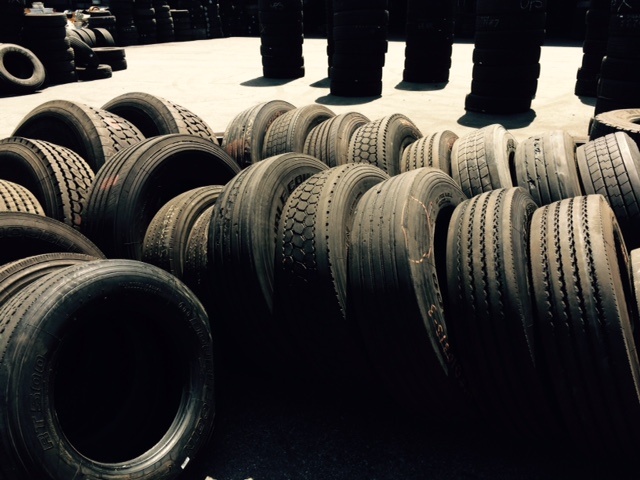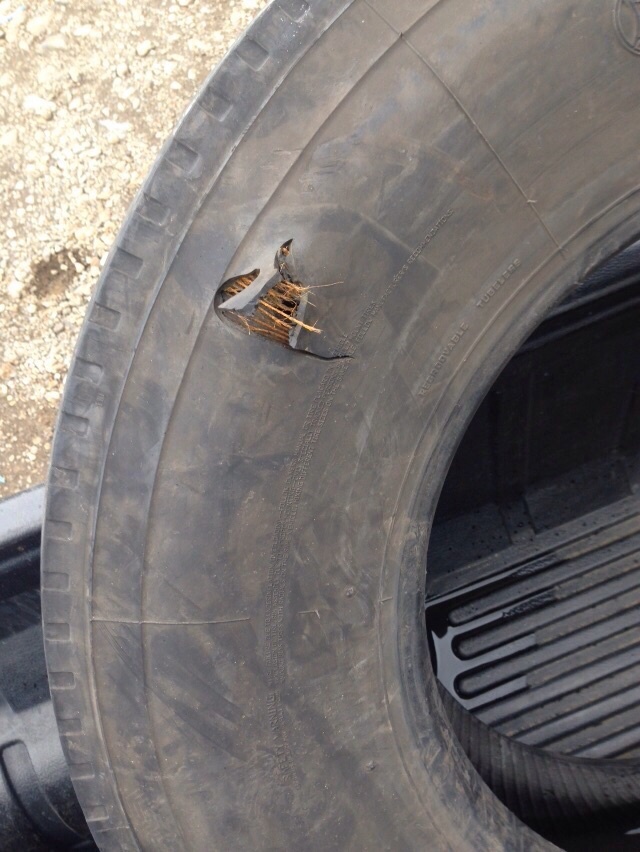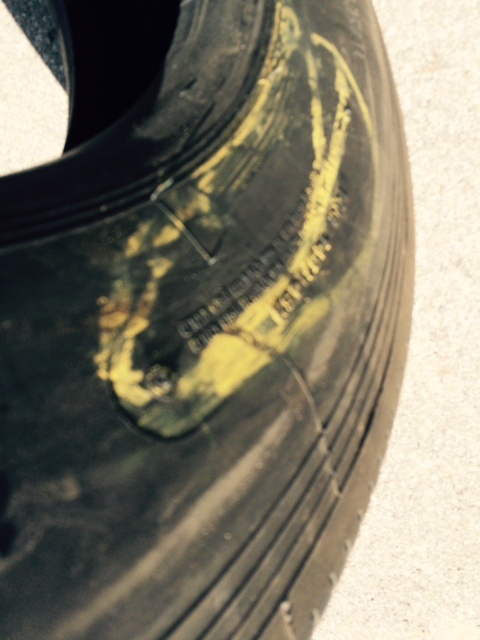Is a scrap tire analysis program part of your fleet maintenance plan? If not, you’re leaving serious money on the table.
Each tire you place on the ground will someday come out of service for some reason.  Your goal is to determine and document the reasons; then analyze your scrap tire data to make important decisions about your tire brands, applications and equipment maintenance practices.
Your goal is to determine and document the reasons; then analyze your scrap tire data to make important decisions about your tire brands, applications and equipment maintenance practices.
Be Systematic
The more systematic you are, the better. Divide the tires into categories (steer, drive, trailer) if possible. Adjustment claim forms are very useful as they have all the data columns pre-printed; or, if necessary, you can use a standard college ruled notebook or legal pad.
You need a few basic tools at the outset:
Additional items may be added at your choosing, such as a set of snap-ring pliers, camera or DOT skiving tool/cutter.
How to Begin
To begin an analysis, pick a tire and write down the brand name, model, size and DOT number if available.
The next step is to mark a line clear across the tread face. This line is the starting and stopping point. Be sure to take your time; don’t overlook the smallest of details. Tire damage is always cause and effect. Inspect the tread area and look for anything unusual like nails, bolts road debris and other hazards that often times indicate the reason the tire has failed. Other times you may only see the final effect.
 Once finished with the tread area, begin to inspect each sidewall (both inside and outside) and look for any penetrations, cuts, snags and other damage of that nature, such as the sidewall impact pictured to the left.
Once finished with the tread area, begin to inspect each sidewall (both inside and outside) and look for any penetrations, cuts, snags and other damage of that nature, such as the sidewall impact pictured to the left.
A flashlight comes in handy to inspect the interior of the sidewall and the innerliner area at the same time. Pay close attention for loose or pulled cords, thin innerliner or body ply wires, humped splices and other indicators of failures.
When you find a defect, hazard or something out of the ordinary, circle it with a crayon (as pictured to the right), then photograph. Having a picture of the damage will allow for later review.
Steer Tires
With steer tires, pay special attention to sharp or feather wear; this is an indication of mechanical or alignment issues with the vehicle. Write down the mileage on the truck when the tire was pulled or removed from service. You can use this with your previous records to see if the tire achieved your target mileage. If the tire was pulled for a road hazard, I recommend omitting this data when analyzing performance as it may skew your information.
Drive Tires
Drive tires can often be used for several years before they come out of service, but sometimes despite your best efforts, this doesn’t happen.
Start with the same crayon mark across the tread face. Look for spotty wear or sipe tearing, etc. Also look for impact damage due to bolts, nails, or other penetrations. Hopefully the tire mounted next to it matched in tread depth or the smaller tire will always wear out quicker.
It ‘s a good idea to write down the number of retreads for each tire. This will help you decide which casings retread the best.
Trailer Tires
Analyze trailer tires the same way. Often times you see curb damage, pinch shocks or some factors that you may not see on tires in drive or steer positions. If cupping has started it isn’t uncommon to have both steer and drive tires placed in the trailer position to “run out” the tires and extend their life.
Document Failures Consistently
Once you have completed a scrap tire analysis or two you will get more familiar with what to look for. Document the failures however you like as long as you do it the same way every time. A bead separation should be listed as a bead separation every time and not something else. For example, don’t mark a bead separation and sidewall separation as the same thing. These are two different failure modes all together, usually caused by different factors.
When finished and back in your office, review your data:
Once you analyze a consistent set of data, you will have a multitude of options to help stretch your tire dollars. For example, maybe you should start a retread program. If you have several grade A casings, perhaps you run some new fuel efficient drive retreads that will last longer than ever expected. The possibilities are endless.
Every tire tells a story. It’s up to you to listen. A consistently performed scrap tire analysis program will help you make future decisions that will save you on one of your fleet’s largest operating expenses.
If you have questions about scrap tire analysis, please click on the LEARN MORE button and I will be glad to follow up with you.
Double Coin tires deliver exceptional value for a wide variety of commercial applications, including trucking, construction, mining, ports and agriculture. Our goal is to provide valuable information for those working in these industries.
8 more days! Visit Double Coin at Expo Proveedores. Vamos a Monterrey! 💃 🕺
#¡NuevoProducto! #transport #mexico #trucktires #bustires #regional #longhaul #monterrey #llantas #llantasnuevas
Twitter feed video.
Had a great time at the 31st Annual #ITDG meeting in Arizona!
#independents #strenghtinnumbers #tiredealers #tire #tbr #otr
📷 In the News: Robert Vetter Talks Tire Performance for Tough Conditions
Robert Vetter, VP of Sales Eastern Canada at Double Coin, was recently featured in Fleet&Mobility Magazine discussing the demanding conditions waste and recycling trucks face — and why application-specific…
Add this ID to the plugin's Hide Specific Tweets setting:


